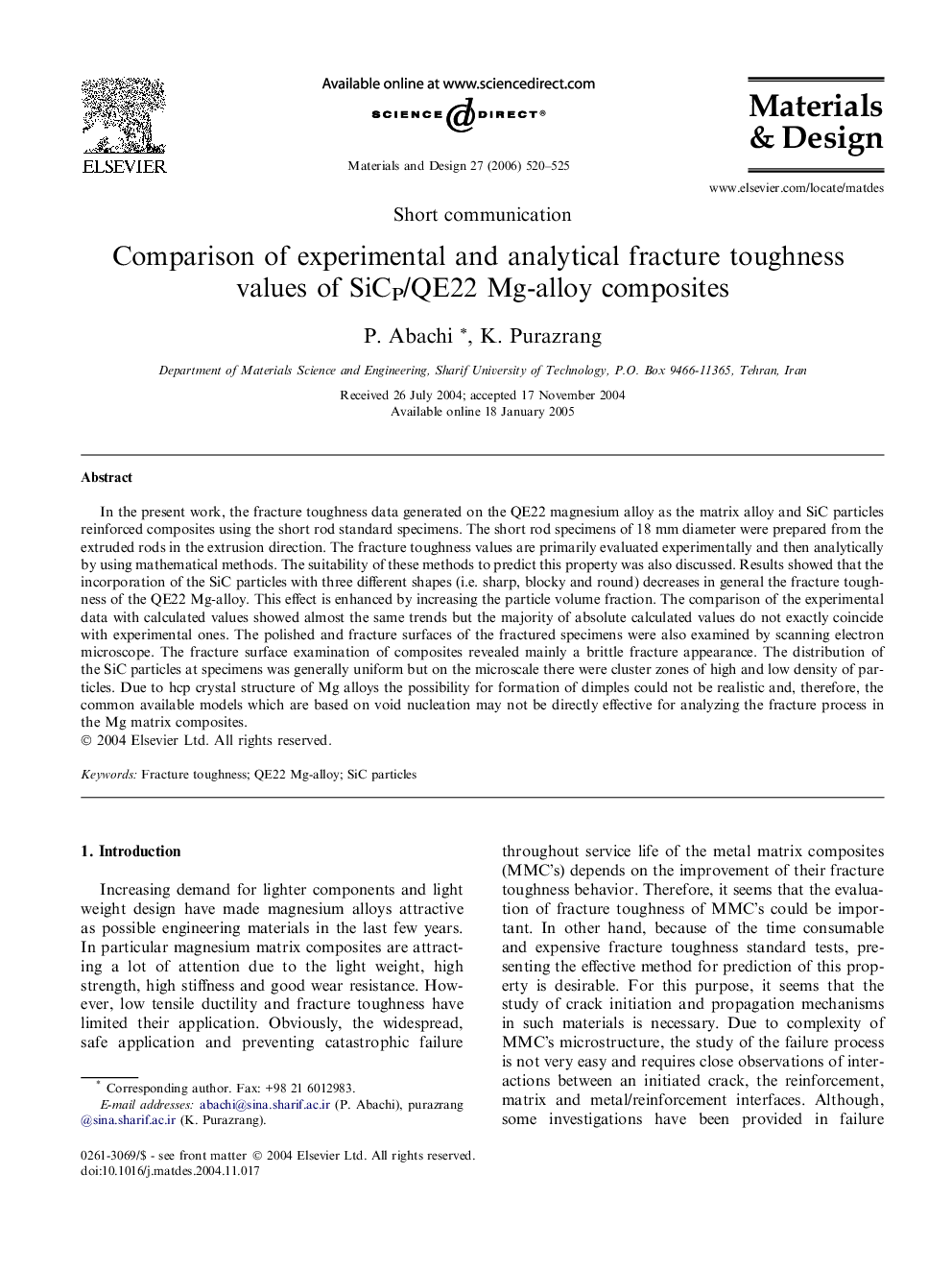| Article ID | Journal | Published Year | Pages | File Type |
|---|---|---|---|---|
| 833928 | Materials & Design (1980-2015) | 2006 | 6 Pages |
In the present work, the fracture toughness data generated on the QE22 magnesium alloy as the matrix alloy and SiC particles reinforced composites using the short rod standard specimens. The short rod specimens of 18 mm diameter were prepared from the extruded rods in the extrusion direction. The fracture toughness values are primarily evaluated experimentally and then analytically by using mathematical methods. The suitability of these methods to predict this property was also discussed. Results showed that the incorporation of the SiC particles with three different shapes (i.e. sharp, blocky and round) decreases in general the fracture toughness of the QE22 Mg-alloy. This effect is enhanced by increasing the particle volume fraction. The comparison of the experimental data with calculated values showed almost the same trends but the majority of absolute calculated values do not exactly coincide with experimental ones. The polished and fracture surfaces of the fractured specimens were also examined by scanning electron microscope. The fracture surface examination of composites revealed mainly a brittle fracture appearance. The distribution of the SiC particles at specimens was generally uniform but on the microscale there were cluster zones of high and low density of particles. Due to hcp crystal structure of Mg alloys the possibility for formation of dimples could not be realistic and, therefore, the common available models which are based on void nucleation may not be directly effective for analyzing the fracture process in the Mg matrix composites.
